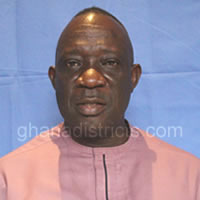SANITATION
Waste Management covering the collection and proper disposal of both solid and liquid waste is now normal in the Kadjebi District. This is because most people consider the collection and disposal of waste as a social service which should not be paid for. But waste management is provided at a cost. The problem of managing waste in this district which revenue base is low and residents are poor becomes more complex.
Aurvey carried out indicates that 60% of households dispose of Solid Waste at public dumps while 30.5% of households dump solid waste in-discriminately. The survey also reveals that 52.6% of households use the pit latrine, 17.6% of households use the public toilet while 16.1% of households have no disposal facility at all for liquid waste. This situation calls for concerted efforts in the area of waste management to improve sanitary conditions in the communities.
Liquid waste Management
The District Assembly with the support of other donors like Sister City relations have contributed to the construction of households latrines for the general public in the district. Ten (10) such public latrines have been located in Kadjebi Township alone. A Cesspit Emptier for the dislodgement of the toilets has been provided.
Solid Waste Management
Solid Waste Management Project, sponsored through the Sister-City relationship between the Municipality of Kaag En Braassem and the Kadjebi District has made some progress in Solid Waste Management in the Kadjebi Township. . A 5-acre plot on lease hold has been acquired to serve as final disposal site of the waste in the containers. A series of sensitization workshops have been organized, under the project, to ensure information is disseminated to the public. A lot of community animation was also undertaken to sensitize the people about the good practices of waste management.
Under the Solid Waste Management, one(1) skip truck , one (1) Refuse truck, 15 refuse containers and 129 litter bins have been provided and sited at strategic locations in Kadjebi Township, Asato, Dodo-Amanfrom and Poase-Cment to facilitate proper waste disposal. A farm track tractor with 15 containers is also in use in Dodo-Amanfrom.
Zoomlion
The activities of Zoom lion waste company which is also into sanitation management can be found in all parts of the district .Zoomlion also operates 2 skip trucks with 16 containers in Kadjebi district it currently has a working force of 76 field officers, 3 technical directors and also performs district wide fumigation activities
LIST OF ODF COMMUNITIES AS AT July 2017
WATER SUPPLY
Safe and reliable water supply is a necessary ingredient for good health and productivity. About 45.9% of households in the district derive their drinking water from rivers/streams, 16.0% from boreholes, 13.6% from wells and 12.4% from pipe borne outside. About 7.6% of households also depend on rain water during the rainy season.
The Ghana Water Company, VRCWSP and GTZ/EVORAP have supplied pipe borne water to big towns like Kadjebi, Ahamansu, Dodi-Papase, Pampawie, Dapaa, Dodi-Mempeasem and Asato with a total number of 62 stand posts.
WATER SUPPLY
Coverage in these towns is low (35%) and supply is intermittent. A lot of residents in these towns, therefore still depend on boreholes and hand dug wells.
The Community Water and Sanitation Programme (CWSP) are responsible for the supply of water to the rural communities within the district. Currently, there are about 189 boreholes serving 62.2% of the rural population in the district. Under the programme, beneficiary communities pay 5% of the initial cost of the project. In addition, they take responsibility of 100% maintenance of the facilities. Funds for maintaining the facilities are derived from charges collected from beneficiary residents in the communities by the WATSAN Committees/Water Boards. The community ownership of the facility works perfectly in the district.
Date Created : 11/21/2017 5:44:45 AM





 facebook
facebook twitter
twitter Youtube
Youtube TOLL FREE 0800 430 430
TOLL FREE 0800 430 430 +233 593 831 280
+233 593 831 280 GPS: GE-231-4383
GPS: GE-231-4383 info@ghanadistricts.com
info@ghanadistricts.com Box GP1044, Accra, Ghana
Box GP1044, Accra, Ghana